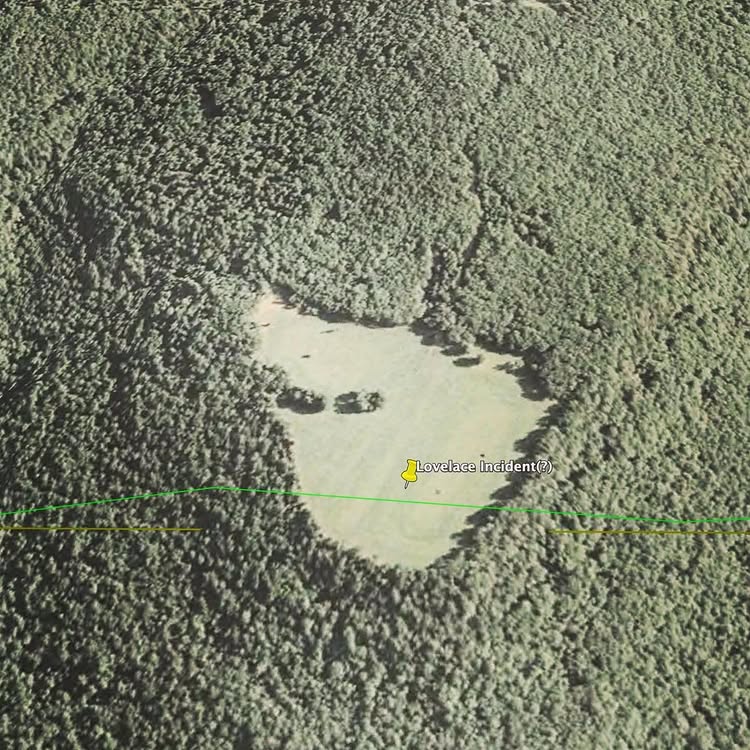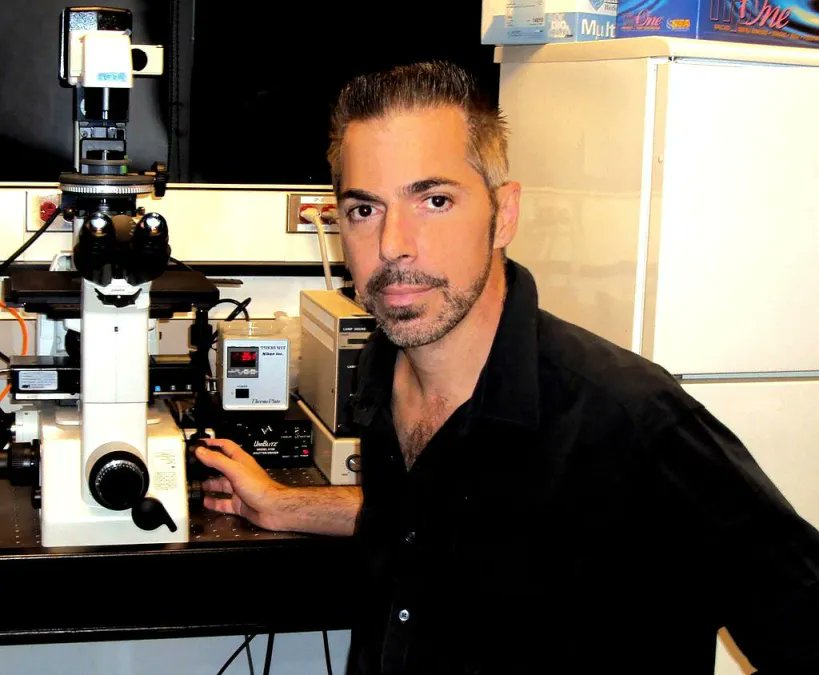This woman found something in 'Dying Human Brain' that makes no sense. Her breakthrough research reveals that a dying brain generates 'Gamma Waves,' suggesting it may remain active in a meaningful way even during death.
For several years, Neuroscientist Jimo Borjigin had been surprised to realize how little we know about what happens to the brain when we die, even though dying is a natural part of life.
About ten years ago, she accidentally discovered this while conducting experiments on rats. She and her team were monitoring brain chemicals after surgery when two rats unexpectedly died, allowing her to observe the brain's activity during death.
She wondered if one of the rats had hallucinations because its brain released a large amount of serotonin—a chemical linked to mood and hallucinations. This made her curious, so she started researching the topic, only to find that very little was known about how the brain behaves when dying.
Since then, as a professor at the University of Michigan, she has dedicated herself to studying this process. What she discovered challenged common beliefs.
For several years, Neuroscientist Jimo Borjigin had been surprised to realize how little we know about what happens to the brain when we die, even though dying is a natural part of life.
About ten years ago, she accidentally discovered this while conducting experiments on rats. She and her team were monitoring brain chemicals after surgery when two rats unexpectedly died, allowing her to observe the brain's activity during death.
She wondered if one of the rats had hallucinations because its brain released a large amount of serotonin—a chemical linked to mood and hallucinations. This made her curious, so she started researching the topic, only to find that very little was known about how the brain behaves when dying.
Since then, as a professor at the University of Michigan, she has dedicated herself to studying this process. What she discovered challenged common beliefs.

For a long time, doctors have declared people "clinically dead" when their heart stops beating. The focus has always been on the heart, not the brain. Since the brain needs oxygen to function, it was assumed that when the heart stops pumping blood, the brain simply shuts down.
However, Dr. Borjigin's research showed something different.
In a 2013 study, her team found that after a rat’s heart stopped, brain chemicals spiked dramatically:
-Serotonin increased 60 times;
-Dopamine (the "feel-good" chemical) rose 40–60 times;
-Norepinephrine (which makes a person alert) increased 100 times.
These levels were much higher than when the animal was alive.
In 2015, they studied more dying rats and found that in every case, the brain became highly active instead of shutting down.
However, Dr. Borjigin's research showed something different.
In a 2013 study, her team found that after a rat’s heart stopped, brain chemicals spiked dramatically:
-Serotonin increased 60 times;
-Dopamine (the "feel-good" chemical) rose 40–60 times;
-Norepinephrine (which makes a person alert) increased 100 times.
These levels were much higher than when the animal was alive.
In 2015, they studied more dying rats and found that in every case, the brain became highly active instead of shutting down.

Dr. Borjigin described her study as the first to examine what happens to the neurophysiological state of the dying brain.
“It will form the foundation for future human studies investigating mental experiences occurring in the dying brain, including seeing light during cardiac arrest,” she said.
In 2022, scientists in the U.S. studied what happens in the brain after death. They used a machine called an EEG to monitor the brain activity of an 87-year-old man who had epilepsy. When he died from a heart attack, they continued recording his brain waves for 15 minutes.
[frontiersin.org/journals/aging…]
They noticed a rise in gamma waves, which are brain signals linked to memory, emotions, and perception. This suggests that the brain may still be active for a short time after death.
The researchers said this was the first time brain activity during the moment of death had been continuously recorded. They found that some brain signals decreased, while gamma waves became stronger after the brain’s overall activity slowed down.
“It will form the foundation for future human studies investigating mental experiences occurring in the dying brain, including seeing light during cardiac arrest,” she said.
In 2022, scientists in the U.S. studied what happens in the brain after death. They used a machine called an EEG to monitor the brain activity of an 87-year-old man who had epilepsy. When he died from a heart attack, they continued recording his brain waves for 15 minutes.
[frontiersin.org/journals/aging…]
They noticed a rise in gamma waves, which are brain signals linked to memory, emotions, and perception. This suggests that the brain may still be active for a short time after death.
The researchers said this was the first time brain activity during the moment of death had been continuously recorded. They found that some brain signals decreased, while gamma waves became stronger after the brain’s overall activity slowed down.
Patient One
Dr. Jimo Borjigin found a 24-year-old dying pregnant woman’s brain revealed a breakthrough discovery in consciousness. After she was taken off oxygen, her brain became very active. Parts of her brain that had been quiet while she was on life support suddenly started to buzz with strong electrical signals known as ‘Gamma waves’.
Patient One was 24 years old and pregnant with her third child when she was taken off life support in 2014. She became one of the most intriguing scientific subjects in recent history. At the time Borjigin began her research into Patient One, the scientific understanding of death had reached an impasse.
Dr. Borjigin, together with several colleagues, took the first close look at the record of electrical activity in the brain of Patient One after she was taken off life support. What they discovered – in results reported for the first time last year – was almost entirely unexpected, and has the potential to rewrite our understanding of death.
“I believe what we found is only the tip of a vast iceberg,” said Dr. Borjigin.
theguardian.com/society/2024/a…
Dr. Jimo Borjigin found a 24-year-old dying pregnant woman’s brain revealed a breakthrough discovery in consciousness. After she was taken off oxygen, her brain became very active. Parts of her brain that had been quiet while she was on life support suddenly started to buzz with strong electrical signals known as ‘Gamma waves’.
Patient One was 24 years old and pregnant with her third child when she was taken off life support in 2014. She became one of the most intriguing scientific subjects in recent history. At the time Borjigin began her research into Patient One, the scientific understanding of death had reached an impasse.
Dr. Borjigin, together with several colleagues, took the first close look at the record of electrical activity in the brain of Patient One after she was taken off life support. What they discovered – in results reported for the first time last year – was almost entirely unexpected, and has the potential to rewrite our understanding of death.
“I believe what we found is only the tip of a vast iceberg,” said Dr. Borjigin.
theguardian.com/society/2024/a…
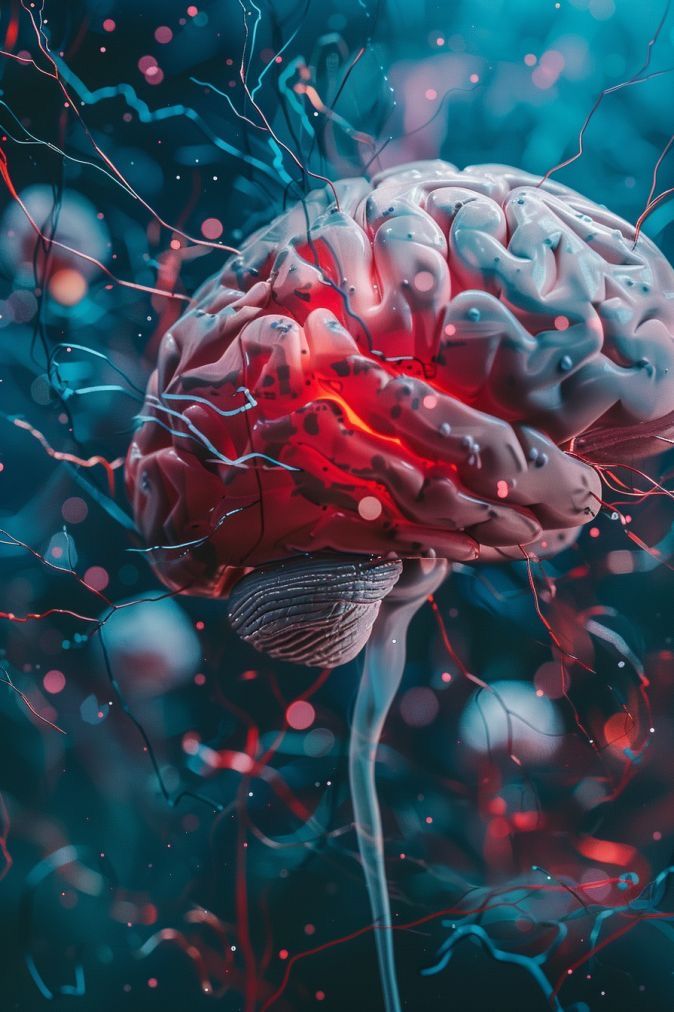
A few years earlier, doctors found out Patient One had a heart condition that made her heartbeat irregular.
During her first two pregnancies, she had seizures and fainted. Four weeks into her third pregnancy, she collapsed at home. Her mother called 911, but by the time the ambulance arrived, she had been unconscious for more than 10 minutes, and her heart had stopped.
She was first taken to a hospital that couldn’t help her, so she was transferred to the University of Michigan. There, doctors had to use a defibrillator three times to restart her heart. They put her on a ventilator and a pacemaker and moved her to intensive care to check her brain activity. She didn’t react to anything, and her brain was very swollen. After three days in a coma, her family decided to remove life support.
The passage then suggests that dying might be a more mysterious process than scientists previously thought. Some people believe strange things happen after death, but new research hints that these unusual experiences may actually occur while someone is still dying. This is what researcher Dr. Borjigin discovered when studying Patient One’s case.
During her first two pregnancies, she had seizures and fainted. Four weeks into her third pregnancy, she collapsed at home. Her mother called 911, but by the time the ambulance arrived, she had been unconscious for more than 10 minutes, and her heart had stopped.
She was first taken to a hospital that couldn’t help her, so she was transferred to the University of Michigan. There, doctors had to use a defibrillator three times to restart her heart. They put her on a ventilator and a pacemaker and moved her to intensive care to check her brain activity. She didn’t react to anything, and her brain was very swollen. After three days in a coma, her family decided to remove life support.
The passage then suggests that dying might be a more mysterious process than scientists previously thought. Some people believe strange things happen after death, but new research hints that these unusual experiences may actually occur while someone is still dying. This is what researcher Dr. Borjigin discovered when studying Patient One’s case.
When Patient One was taken off oxygen, her brain suddenly became very active. Parts of her brain that were quiet before started showing strong signals called gamma waves, especially in areas linked to consciousness. Some signals lasted over six minutes, and in some areas, the activity was 11 to 12 times stronger than before.
Dr. Borjigin explained that as she was dying, her brain went into overdrive. For about two minutes, her brain waves became highly synchronized, a state linked to focus and memory. This pattern slowed briefly, then became active again for over four minutes, paused for a minute, and then surged a third time.
During this time, different parts of her brain started communicating with each other, especially right after oxygen was cut off. The strongest communication lasted almost four minutes, with another burst happening more than five minutes after life support was removed.
The areas responsible for awareness and memory were active, as well as the parts linked to empathy. Even as she neared death, her brain still showed signs of activity, almost as if it was holding on to something like life.
Scientists had seen brain waves in dying patients before, but nothing as detailed or complex as what happened with Patient One.
Dr. Borjigin explained that as she was dying, her brain went into overdrive. For about two minutes, her brain waves became highly synchronized, a state linked to focus and memory. This pattern slowed briefly, then became active again for over four minutes, paused for a minute, and then surged a third time.
During this time, different parts of her brain started communicating with each other, especially right after oxygen was cut off. The strongest communication lasted almost four minutes, with another burst happening more than five minutes after life support was removed.
The areas responsible for awareness and memory were active, as well as the parts linked to empathy. Even as she neared death, her brain still showed signs of activity, almost as if it was holding on to something like life.
Scientists had seen brain waves in dying patients before, but nothing as detailed or complex as what happened with Patient One.

When Patient One was dying, certain parts of her brain were still active and connected, which suggests she might have had a strong near-death experience. This could mean she felt like she was outside her body, saw bright lights, felt peaceful or happy, and reflected on her life.
However, since she didn’t survive, no one can say for sure if these brain signals actually created real experiences. Some experts argue that her brain activity doesn’t explain near-death experiences because her heart didn’t completely stop. But this idea isn’t proven, since near-death experiences might still happen even if the heart is still beating a little.
Another patient, a 77-year-old woman called Patient Three, also showed brain activity while dying. This challenges the belief that the brain stops working almost immediately after death. In fact, the brain might become very active when the heart stops. As researcher Borjigin put it, dying might be more "alive" than we ever thought.
However, since she didn’t survive, no one can say for sure if these brain signals actually created real experiences. Some experts argue that her brain activity doesn’t explain near-death experiences because her heart didn’t completely stop. But this idea isn’t proven, since near-death experiences might still happen even if the heart is still beating a little.
Another patient, a 77-year-old woman called Patient Three, also showed brain activity while dying. This challenges the belief that the brain stops working almost immediately after death. In fact, the brain might become very active when the heart stops. As researcher Borjigin put it, dying might be more "alive" than we ever thought.
Dr. Borjigin believes that understanding the dying brain is one of the “holy grails” of neuroscience. “The brain is so resilient, the heart is so resilient, that it takes years of abuse to kill them,” she pointed out. “Why then, without oxygen, can a perfectly healthy person die within 30 minutes, irreversibly?” Although most people would take that result for granted, Borjigin thinks that, on a physical level, it actually makes little sense.
This isn’t the first time they have evidence of brain activity during death, especially in the area that is associated with memory.
Scientists accidentally captured unique brain data from an elderly man who died suddenly during a routine test. Just before and after his heart stopped, his brain waves were similar to those seen during dreaming, remembering, and meditating. This suggests that people may really experience their life “flashing before their eyes” when they die.
Some people who have had near-death experiences have reported seeing their memories replayed. However, this is the first scientific evidence that this “flash” might actually happen. Since this is just one case, it’s hard to know how common it is or exactly what the experience feels like.
The discovery was made in 2016, when scientists were studying the brain activity of an 87-year-old man with epilepsy. While performing a brain test (EEG) to understand his seizures, the man suffered a heart attack and died. This unexpected death led to the first-ever recording of a dying brain.
[livescience.com/first-ever-sca…]
Scientists accidentally captured unique brain data from an elderly man who died suddenly during a routine test. Just before and after his heart stopped, his brain waves were similar to those seen during dreaming, remembering, and meditating. This suggests that people may really experience their life “flashing before their eyes” when they die.
Some people who have had near-death experiences have reported seeing their memories replayed. However, this is the first scientific evidence that this “flash” might actually happen. Since this is just one case, it’s hard to know how common it is or exactly what the experience feels like.
The discovery was made in 2016, when scientists were studying the brain activity of an 87-year-old man with epilepsy. While performing a brain test (EEG) to understand his seizures, the man suffered a heart attack and died. This unexpected death led to the first-ever recording of a dying brain.
[livescience.com/first-ever-sca…]
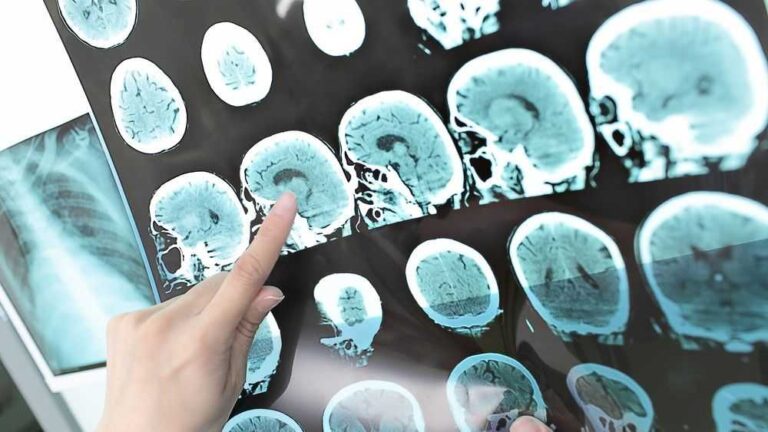
In her study, published in 2023, Dr. Borjigin & her team studied four patients who were in a coma and on life support. When life support was removed, two of them showed a surge in brain activity as they passed away.
This brain activity wasn’t random. Their brains produced gamma waves, which are usually linked to consciousness. These signals appeared in key brain areas related to consciousness, suggesting that the brain might remain active in a meaningful way even during death.
[pnas.org/doi/10.1073/pn…]
The study does not suggest that people in a coma suddenly wake up just before they die. Instead, it shows that the brain becomes very active right before death, which might explain why some people report seeing visions or feeling like they are outside their bodies.
Dr. George Mashour, one of the researchers, says that it is a mystery how the brain can create such clear experiences while it is shutting down. This study helps us understand the brain activity that happens in the final moments of life.
[sciencedaily.com/releases/2023/…]
This brain activity wasn’t random. Their brains produced gamma waves, which are usually linked to consciousness. These signals appeared in key brain areas related to consciousness, suggesting that the brain might remain active in a meaningful way even during death.
[pnas.org/doi/10.1073/pn…]
The study does not suggest that people in a coma suddenly wake up just before they die. Instead, it shows that the brain becomes very active right before death, which might explain why some people report seeing visions or feeling like they are outside their bodies.
Dr. George Mashour, one of the researchers, says that it is a mystery how the brain can create such clear experiences while it is shutting down. This study helps us understand the brain activity that happens in the final moments of life.
[sciencedaily.com/releases/2023/…]
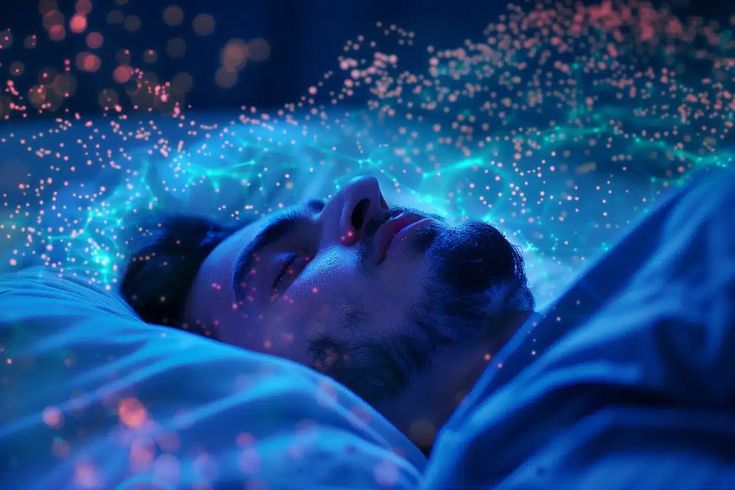
Scientists studied brain activity in four coma patients who had little chance of recovery after a heart attack. These patients were kept alive with ventilators, but in 2014, their families decided to let them pass away.
Before removing life support, doctors placed EEG cap on their heads to measure brain activity.
In two of the patients, their brains suddenly showed strong bursts of activity for up to two minutes. This activity happened in a specific part of the brain called the TPO junction, which helps process visual information. The signals also spread to other parts of the brain.
Scientists believe this area might play a key role in how the brain creates consciousness. Similar results have been seen in animal studies. The findings suggest that even during cardiac arrest, the human brain can still be active.
Before removing life support, doctors placed EEG cap on their heads to measure brain activity.
In two of the patients, their brains suddenly showed strong bursts of activity for up to two minutes. This activity happened in a specific part of the brain called the TPO junction, which helps process visual information. The signals also spread to other parts of the brain.
Scientists believe this area might play a key role in how the brain creates consciousness. Similar results have been seen in animal studies. The findings suggest that even during cardiac arrest, the human brain can still be active.
Dr. Ajmal Zemmar, a neurosurgeon who co-authored the 2022 study but wasn’t involved in 2023 study, said that if researchers continue to see the same brain activity in dying people, it could help pinpoint where consciousness comes from in the brain.
[scientificamerican.com/article/surges…]
Not everyone is convinced. Dr. Daniel Kondziella from the University of Copenhagen said the results aren’t surprising because brain activity can become chaotic in the moments after the heart stops.
One interesting finding is that the two patients who showed strong brain activity had a history of mild epilepsy, though they hadn’t had seizures in the 24 hours before the study. It’s possible that hidden seizures deep in the brain triggered the gamma waves, but the electrodes on their scalps may not have detected them.
Scientists also don’t know if these brain waves are linked to near-death experiences. However, the findings offer a new way to study hidden consciousness in dying people.
[scientificamerican.com/article/surges…]
Not everyone is convinced. Dr. Daniel Kondziella from the University of Copenhagen said the results aren’t surprising because brain activity can become chaotic in the moments after the heart stops.
One interesting finding is that the two patients who showed strong brain activity had a history of mild epilepsy, though they hadn’t had seizures in the 24 hours before the study. It’s possible that hidden seizures deep in the brain triggered the gamma waves, but the electrodes on their scalps may not have detected them.
Scientists also don’t know if these brain waves are linked to near-death experiences. However, the findings offer a new way to study hidden consciousness in dying people.

• • •
Missing some Tweet in this thread? You can try to
force a refresh



